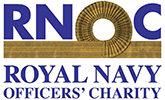Views from the Fleet Flagship 10
Posted on Thursday 21 October 2021
Presenting the 10th in our exclusive series for members, highlighting the role of Tush Chatterjee.
What is your role onboard?
I am the Commander Marine Engineer appointed to HMS QUEEN ELIZABETH. I have the privilege to lead the largest department on board with 190 Marine Engineers looking after the ship’s propulsion system, power generation and distribution, hotel services and most importantly support to aviation operations.
HMS QUEEN ELIZABETH is a High Voltage platform capable of producing over 100 Mega watts of power via two Rolls Royce MT30 marine gas turbines and 4 large Wartsila diesel generators. In essence the generators produce enough power to supply a city the size of Swindon. These engines help propel 65,000 tonnes of aircraft carrier at speeds up to 27 knots if required.
Whilst my primary role on board, as a Head of Department, is to provide assurance and oversight to Command on all matters pertaining to safety, I am also the Group Repair Coordinator for the entire Task Group providing engineering assurance and advice to COM CSG.
In 21 years of service, this has to be the most professionally demanding and rewarding assignment I have had. Deploying with the Carrier Strike Group on the maiden operational tour to South East Asia and operating in the Indo Asia Pacific region has been challenging and sets the blue print for Royal Navy Task Group Operations.
What has the ship been up to in the past fortnight?
In the past few weeks HMS QUEEN ELIZABETH has completed a Mid-deployment Support Period (MDSP). This work was undertaken on the island of Guam within the US Naval Base facility. As one might imagine a ship this size has a significant maintenance burden, particularly when 1500 occupants put every system on board to test.
Guam is the furthest east that the Strike Group has travelled. The original MDSP was planned to be delivered in Tokyo, Japan but a worsening COVID situation in the country necessitated a late change to the plan. This presented a significant challenge as the support enterprise was in the advanced stages of getting contractors and equipment out to Japan to deliver the MDSP. Stringent quarantine rules and lack of any liberty for Ship’s Company in Japan influenced this decision, which was not taken lightly and required negotiations with PJHQ to gain the relevant approval.
So with less than four weeks before the Task Groups arrival in to Guam, the support enterprise had to reorganise flights for up to 80 contractors and around 20 tonnes of freight/stores to Guam. It was fortuitous that support contracts were set up rapidly and the agents within Guam set about sourcing large cranes, fork lifts, cherry pickers, paint cats, fuel/sullage barges and workshop facilities to support all the maintenance work undertaken on QUEEN ELIZABETH and 4 other Task Group Units.
In 12 days just over 500 manhours of work was undertaken by a collaboration of contractors and ship’s company. Aircraft lifts, critical to supporting aviation ops, had 6 monthly surveys and defect rectification work done. Diving activity by the Expeditionary Diving Unit (XDU) completed under water hull surveys and also In Water Engineering and Maintenance – a first for the XDU in over 10 years. The Ship’s diesel generators had extensive ‘hours based’ maintenance undertaken to ensure availability for the remainder of the deployment. Essential flight deck preservation and some upper deck husbandry was also completed despite some heavy rainfall.
During this busy period Ship’s Company also had an opportunity to take some leave and enjoy the island life with access to white, sandy beaches, exotic diving and snorkelling opportunities and excursions into the forests of Guam. About 10 days in to the maintenance period the Ship had to recall majority of personnel ashore due to a developing tropical depression which required QUEEN ELIZABETH to put to sea for 36 hours to avoid a typhoon. This caused an amount of disruption to the maintenance period but highlighted the nature and risk of maritime operation in this region.
I am glad to say that the Ship returned to Guam to complete all maintenance activity, recover personnel and returned to operations in a much better material state – ready for the next phase! It is worth recognising that there are many ‘firsts’ for the RN and CSG 21 but most notable is the delivery of engineering support over 12000 Km away from the UK and with largely untested supply chain whilst large parts of the world still remained shut due to the pandemic. This is what operational engineering, at reach, is all about!

